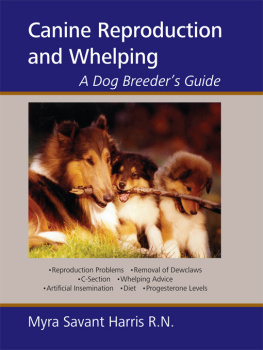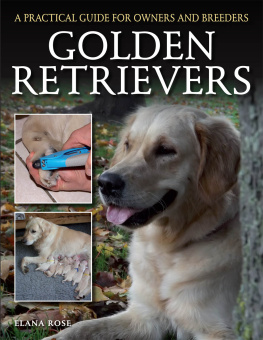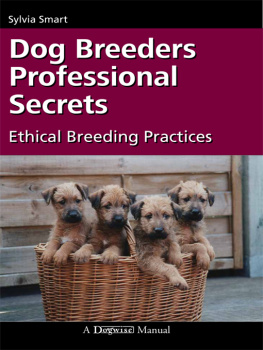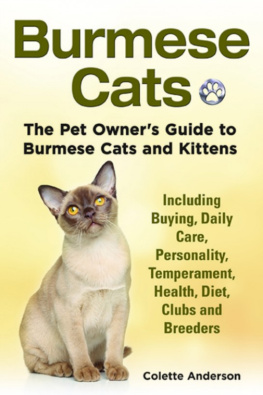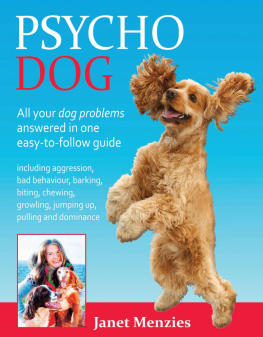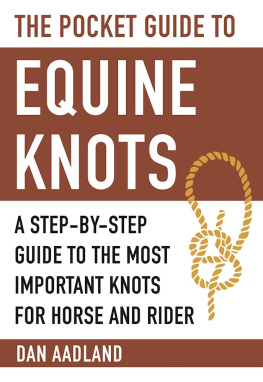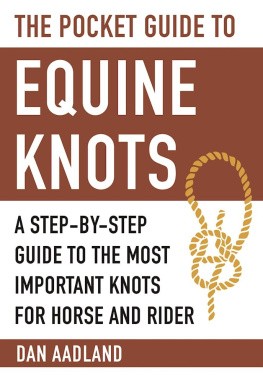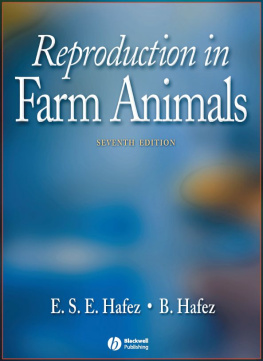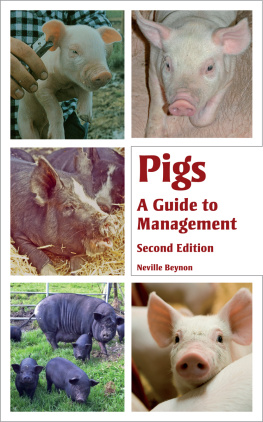A Dog Breeders Guide
Myra Savant-Harris RN
Distributed by Dogwise Publishing Copyright
2005, MYRA SAVANT-HARRIS, RN
All rights reserved. No part of this book may be used or reproduced in any manner whatsoever without written permission from the author. For permission, e-mail Myra Savant-Harris at myrasavant@hotmail.com .
The information contained in this book is complete and accurate to the best of the authors knowledge. All recommendations are made without guarantee. The author disclaims any liability with the use of this information.
It gives me great pleasure to dedicate this book to my lovely boy, AKC Champion Peakdowns Aidan. By watching Aidan and his fabulous little nose, which was followed by fabulous little puppies, I have gained an education that all the books in the world could not have given me.
AKC Champion Peakdowns Aidan

Acknowledgements
I would like to thank the following individuals for their work on this book:
Cover design: Joann Opel
Cover photographer: Caroline Baines
Photography: L. Calyn Miller
Editing: L. Calyn Miller and Eileen Starks
I greatly appreciate their hard work and encouragement. Without the help and technical assistance from my son, Calyn, I literally could not have completed this book, nor Puppy Intensive Care .
Table of Contents
TABLE OF CONTENTS
How Did I Get Here?
Although I worked as a labor/delivery and neonatal ICU RN for many years and assisted in literally hundreds of human births, I was very intimidated by the process of whelping my first few litters of puppies. It was rather puzzling to me why delivering a human baby had become so routine to me while whelping a litter of puppies seemed so scary. I had some conversations with some other dog breeders who also happened to be either nurses or physicians, and we all shared the same fears. Although we were all careful and thoughtful about the jobs that we did, none of us faced our daily work with actual fear. But yet, as experienced as we were in our various fields of practice, not one was comfortable when it came to assisting our bitches in the delivery of their puppies. After thinking this through carefully, I came to a clear understanding of why delivering puppies was so much more daunting than assisting in the delivery of babies.
In human medicine, a health care provider becomes very dependent upon your patient to TELL you things. They walk into your department literally pouring out information. They verbalize everything. They can tell you when their contractions started, how they feel, where they hurt, how their last delivery went, how many babies they are carrying; even the gender. Once you get them settled, you are able to do a vaginal exam that enlightens you even further. The first two fingers on my right hand were highly educated. They could tell me all about effacement, dilatation, presentation, position and more. Those two fingers could even tell me if the baby had hair or not. They were my best friends. They gave me even more information than the mother could tell me. So a vaginal exam, coupled with a verbal history from the mother, gave me a great deal of information and with information and knowledge came confidence.
My bitches on the other hand could not verbalize anything to me. Sure, they could dig around in my closet, but for crying out loud, what was that supposed to tell me? Its not as thought they had never gotten in my closet and dug around before so what exact piece of information was I to gain from watching that behavior? I was told early on that to do a vaginal exam on a small dog I was supposed to use the little finger. The LITTLE finger? That is the stupid finger. It doesnt know anything. It can barely get the latex glove on without screwing up all the other fingers. Good grief. The little finger was the one that usually ended up taped to a wound or something, and it was my information source? Oh my. We were in so much trouble.
So let me get this straight all I had was a non-verbal pregnant mom digging in the closet and my little finger? Where was my fetal monitor? Where was the OR team? Where were the Respiratory Therapists who came at the buzz of a call button? Where were my good dependable moms bursting with verbal information? (I have to push. I have to push NOW.) Most of all where were those cervixes, which kept me informed of the laboring process every step of the way. Clearly, I had a lot of adapting to do. My job was to learn about the canine birth process without the benefit of sophisticated technology, spoken language and lots of professional help at my fingertips.
It took me a while to figure out that the bitches had lots of information to give me. I had to learn how to correlate their behaviors and anatomical changes with the various stages of gestation and labor. My little finger, while admittedly not very well educated and still a tad on the ignorant side, could at least tell me if there was a puppy in the birth canal. Sometimes it could snag a placenta which had been left behind and get it out of the way. After several litters, I began to be able to put the pieces together and start to function as a canine labor/delivery RN. Books helped me, but I had to read several of them in order to learn the things I needed. Conversations with my repro specialist, Dr. Cindy helped immeasurably. Talking with other breeders who so graciously shared their experiences helped a lot. After my first book, Puppy Intensive Care began to do so well and I starting giving seminars on the book, I began to see the need for a second book. Breeders were asking me for a book about the canine reproductive system and how to whelp their puppies. After two years of research and dawdling here it is. I am hopeful that my experience as a labor/delivery nurse, coupled with the many, many things I have read and researched, combined with the things that other dog fanciers have shared will result in a book that will assist breeders. I have tried to make it easy to read, easy to understand and educational in all ways.
As I have written the book, I have been acutely aware that for some of you, parts of it may be too simplistic, while for others, it will be filled with new information. My hope is that each reader will take away something from this book that will make a positive difference in your careers as dog breeders.
Breeding is About Both Ethics and Genetics
Actually, it may be a question, but you wont find an answer from me; pointers maybeperhaps even a suggestion or two, but answers no. Obviously, I have opinions; I am a dog breeder after all. I have a personal philosophy of breeding and things that I hope to accomplish with each breeding. I believe in health testing. There may be a book out there about breeding and personal ethics, but this book is not it. This book is about canine reproduction and whelpingbut personal ethics are part of that picture.
My goal is to teach you the things that you need to know in order to breed your dogs and help your bitches to whelp their littersplain and simple. My goal is to teach, not to preach; and if everything works out the way it should, that is all that will happen within these pages. With any luck at all, my soapbox will remain in its corner (well, most of the time anyhow).
Now, having said that, I would like to have you consider all of the ramifications of breeding your dogs. Just considering all of the factors involved may help you come to a well-thought out, valid decision before the sperm has said howdy to the egg, so to speak.
Sometimes Its About Ethics
Before you make a decision to breed your dogs, decide what it is you hope to accomplish. What is your goal, other than to have a litter of puppies? Do you want to better the breed? Do you want to win in the show ring with something that you have produced yourself instead of purchased? Do you want to work on specific health issues that could be decreased or maybe even eliminated with careful breeding practices? Do you want to provide little Susie and little Bobby with an opportunity to witness the miracle of birth? (Please just say no.) Are you hoping to finance that long-awaited trip to Hawaii? (Again, just say no.) What are your goals? Put them in writing.
Next page
